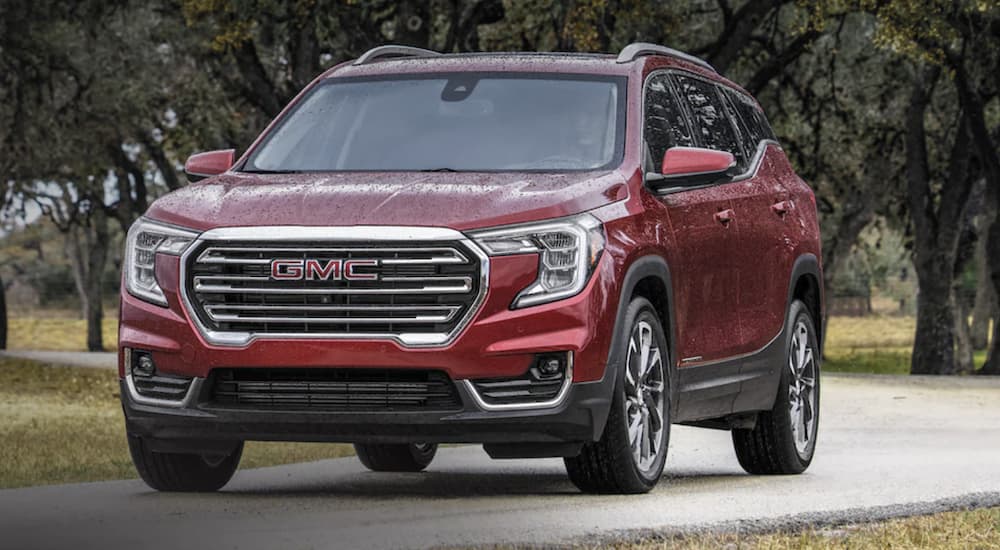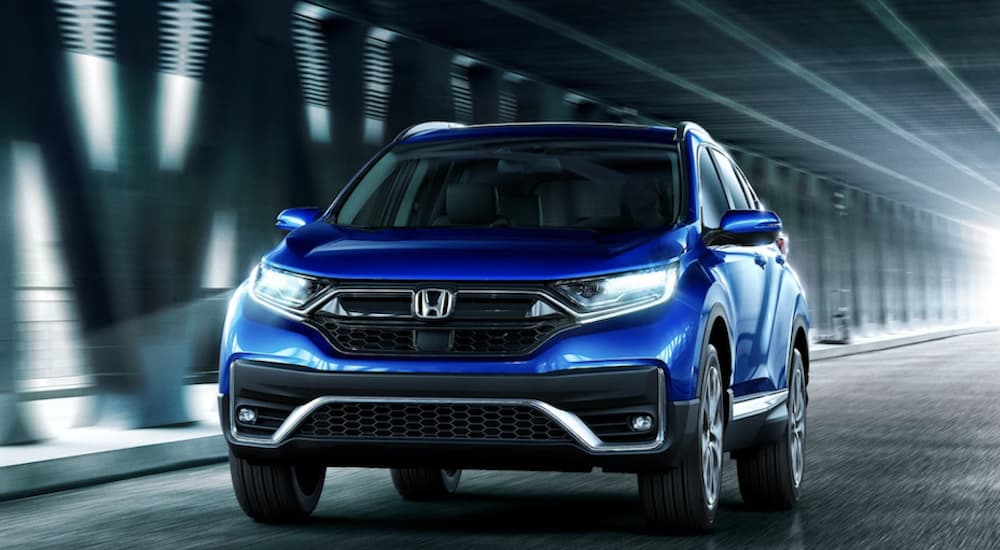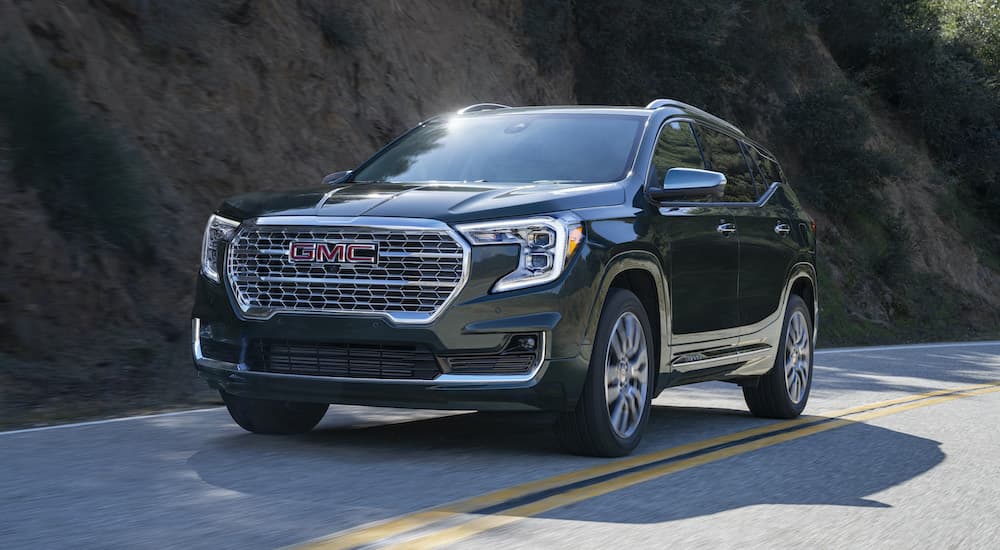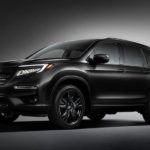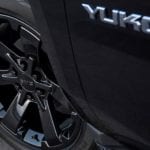SUVs are in, and every manufacturer is offering an expansive lineup of options to choose from. At last count, there were nearly 130 SUVs and crossovers on the market spanning eight different categories. That means you have a lot of decisions to make to narrow down your options. Making broad considerations, such as a large SUV versus a subcompact crossover, and specific comparisons, like the 2022 GMC Terrain vs 2022 Honda CR-V, are necessary before you can find your perfect SUV.
However, if you are feeling that there is simply too much to consider, don’t worry. With a few simple decisions, you will be able to sort through options and narrow things down to a handful of SUVs that fit your needs. For example, let’s say you’re shopping for the best compact SUV. Your options are vast, but because none of us have time to test drive 50 contenders, we can cull the herd before getting down to brass tacks. Here’s how.
Decide on a Budget (And Stick With It)
Many new car buyers have trouble determining a budget. Part of the problem is the array of available finance and lease programs designed to highlight monthly payments instead of the actual purchase price. It’s easy to lose sight of your budget when well-meaning finance companies put more expensive vehicles within reach. When you pick a range, the pool of contenders shrinks, making choosing a lot easier.
Our advice is to stick with a price range regardless of the available finance incentives. Sure, sometimes it makes good financial sense to pursue a special lease offer, but remember that these programs start with a firm purchase price. In leasing, it’s called a capitalized cost. More traditional financing programs calculate payments on the sale price.
Keep in mind that monthly payments on a loan vary based on factors like the down payment and interest rate. The same holds true for a lease, except the interest rate is replaced by a more complex formula called the money factor, and residual value (what the SUV is worth at the end of the lease term) is key. The most crucial figure by far is the overall selling price. If you set a firm budget range, you’ll stay focused on the models and trims you can afford.
Let’s look at an example. If you’ve settled on the 2022 GMC Terrain, you have a choice of four trims: the SLE, the SLT, the off-road AT4, or the high-end Denali. Prices range from under $30,000 for the base model to over $40,000 for the loaded Denali trim. If your top-end budget isn’t firm, you’ll likely engage in “trim creep” and justify a higher-priced model for the extra bells-and-whistles. Suddenly, you’re a monthly payment shopper.
Make a List of Must-Haves
Choosing a budget is the best first step, but it won’t narrow down your options nearly enough. To do that, you’ll want to decide which features and capabilities you can’t live without. Break it down into specific categories, like safety, convenience, and utility, then ruthlessly rank what’s most important. Finally, commit to only considering vehicles that meet your criteria and try to avoid being forced to accept features you don’t want.
Safety features include a variety of systems and equipment designed to protect occupants during a crash and help prevent collisions in the first place. For example, the 2022 GMC Terrain features standard GMC Pro Safety across the entire trim range. It’s a suite of driver-assist systems that use sensors, radar, and cameras to continuously monitor the area surrounding your vehicle. These systems include tools like Forward Collision Alert and IntelliBeam automatic high beams.
As for convenience features, this is where it gets tricky. There are hundreds of ways to configure a new SUV. Do you want leather seats? Cold weather-friendly features like a heated steering wheel? Consider infotainment and connectivity, too. If smartphone and smart home device integration are high on your list, remove any vehicle that doesn’t integrate the latest technology. The process is tedious, but having a detailed list makes it easier to shorten the list of contenders.
Since the “U” in SUV is short for utility, it’s logical to put features like cargo capacity and off-road capabilities high on your list of must-haves. If you’re a weekend adventure seeker, your criteria will differ from that of a busy suburban family. The GMC Terrain AT4, with its Traction Select System and Goodyear Sport Terrain tires, favors an active lifestyle. Meanwhile, busy families who spend hours in the car every day might better appreciate the Denali’s long list of luxury features, including leather seating, a sunroof, and a heated steering wheel, along with its expansive passenger and cargo space.
Perform Focused Due Diligence
Let’s say you’ve narrowed your search to the 2022 GMC Terrain and the 2022 Honda CR-V. Each trim in their respective model lineups includes standard and optional equipment and available bundled appearance and equipment packages. This makes choosing a trim somewhat confusing. GMC’s lineup is far more logical because it includes four distinct trims: two are budget-friendly, one is off-road oriented, and one is a premium luxury version.
The least expensive Terrain SLE is offered with optional all-wheel drive. You can also pick from premium, extra cost exterior paint colors and multiple equipment packages that can add nearly $15,000 to the base price and put it closer to the price of a Terrain Denali. GMC differentiates each trim with standard features and exclusive equipment to combat trim overlap and confusion. As a result, some features found on the Denali aren’t available on the lesser-priced SLE.
The 2022 Honda CR-V lineup requires a more complex trim comparison. Some of the five available trims are priced within $1,000 of each other, while others are separated by close to $5,000. With such a random price strategy, buyers will scratch their heads. Sifting through the CR-V’s illogical trim pricing requires a deep dive into each version’s specifications and an eagle eye to determine the differences.
If you want to DIY the process, play with the build tool on each manufacturer’s website. Pay close attention to any equipment packages you have to add to outfit the vehicle with your must-have equipment. These packages often contain extra-cost equipment you don’t want or need. In that case, it might make more sense to move up a trim level. Don’t be afraid to move on to another model if the configuration options don’t make sense.
Apply Logic and Firm Boundaries
Sifting through dozens of SUVs to find the best fit requires time and patience, but the task is simpler when you set boundaries. We waste a lot of time trying to retrofit random models into our lifestyle when we could take a more proactive approach. Doing so ensures you’ll end up with the right SUV.
Buyers tend to figure this out at different stages in the process, but no buyer will get far without establishing a baseline budget. This should happen before you click on a single website or read one word of a third-party review. Why? Nothing stings more than falling in love with a vehicle only to discover you can’t afford it or learning that you have to travel too far up the trim range to get the features you want.
The same holds true for shopping by monthly payment. Unfortunately, many lease and loan deals are marketing ploys designed to hook you. After a closer look, you might find a massive down payment requirement or even necessary qualifying criteria that eliminates you, such as a near-perfect credit score. Save time and headaches by picking and sticking to a firm budget and making a list of must-haves to narrow your search.
